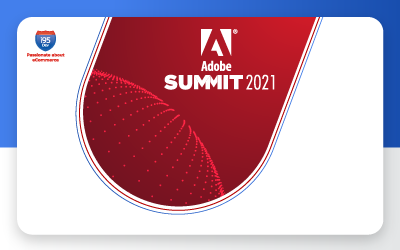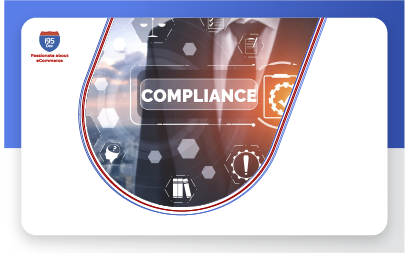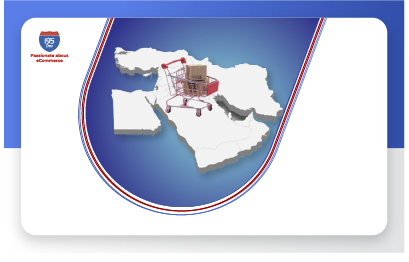How to improve SEO of
your Magento store? Part 3

You can call SEO a science or an art of convincing Google to rank websites better, but what matters more is how you expertise on SEO as that is the masterstroke to bring in more traffic and increase sales. While our first 2 blogs of the series has explained various ways to improve SEO for your website, it’s not yet over. The third blog of the series will discuss in depth on Product Meta Tags and Redirection as part of your website SEO activities.
Setting Product Meta Tags
Meta Tags are components of HTML coding that hold informational details regarding page’s content. Search engines mostly use this data to catalog web pages and thereby return them as search results. It helps to improve your site’s ranking in search engine results. As we dive deep into Product Meta Tags, we uncover more on how writing Meta Information for your products positively impact your business’s bottom line.
To set product Meta tags:
1. In the Admin panel, select Catalog > Manage Products
2. Select a product to edit by clicking Edit on its respective row
3. Select Meta Information tab from the left panel to display the following window
4. Enter content in the following fields:
- Meta Title – This is used to give each product page a unique title. This title can be seen at the top bar of a web browser. It is also used as the title on a search engine results page (SERP).
- Meta Keywords – Meta keywords are words and phrases relevant to the product or page. In 2009, Google officially announced that it will not use Meta keywords in page ranking (see more here: http://googlewebmastercentral.blogspot.com/2009/09/google-does-not-use-keywords-meta-tag.html).
- Meta Description – The Meta description is a short description of the page or product. This description is sometimes used by search engines in the little snippet used on a SERP.
Both Meta Title and Meta Descriptions on each page must be unique. It is recommended to create a dynamic or programmatic way to create unique Meta descriptions for automated pages in order to combat duplicate Meta descriptions.
Meta information is essentially your first level of contact with potential customers that are searching for relevant key words. Your title and description is a selling tool that will either motivate a user to click your link or not. It is wise to use a descriptive title and a description that includes relevant words that a potential customer might search.
Meta information will not be visible to visitors of your page, but it will be read by search engine spiders (or bots). In your product page’s HTML code it will look something like this to the search engine:
Although Google has officially announced that it does not recognize Meta keywords, this doesn’t mean other search engines don’t. In the past, key words were used to manipulate search engine results and, therefore, can change the ranking value among major search engines. Be sure to write a Meta title and description for products you add to your online store. However, Meta keywords can be given the lowest priority.
# Learn how to manage URL rewrites and creating Robots.txt File, read our blog How to improve SEO of your Magento store? Part 1
Redirection
Redirection is a SEO practice of forwarding one URL to a different URL. It’s a way to send both users and search engines to a different URL from the one they originally requested. There are three main kinds of redirects: 301, 302 and Meta refresh.
301 redirect is a permanent redirect which that passes above 90% of ranking power to the redirected page. Experts consider this as the best method for implementing redirects on a website.
302 redirect is a temporary redirect that passes 0% of ranking power to the redirected page and runs on a Hypertext Transfer Protocol (HTTP) protocol that dictates how URLs work.
Meta refreshes are one kind of redirect that is executed on the page level rather than on the server level. They do pass any ranking power and are typically slower, and not a recommended SEO technique. They are generally associated with a five second countdown along with the text “If you are not redirected in five seconds, click here.” Meta refreshes are usually not recommended as an SEO tactic due to poor usability and inability to pass on of ranking power.
301 vs. 302
As per general thumb rule, there are very few situations where a 302 redirect would be most appropriate. The reason for this is because of how search engines interpret 301 and 302 redirects. When a search engine encounters a 301 redirect, it will index the new page and make a note so that it credits the new page for all links directed towards the old one. On the contrary, a 302 redirect will tell the search engine to index the new page while also keeping and indexing the old one. This is sometimes considered “double dipping” and can result in duplication of content in the eyes of the search engine crawlers.
The difference is quite subtle. Visitors of your online store will not notice a difference between the two. In the perspective of SEO, however, this could be hurtful to your store’s search engine rankings. It is an SEO best practice to use a 301 redirect when in doubt because more often than not, it’s what you should be using.




















